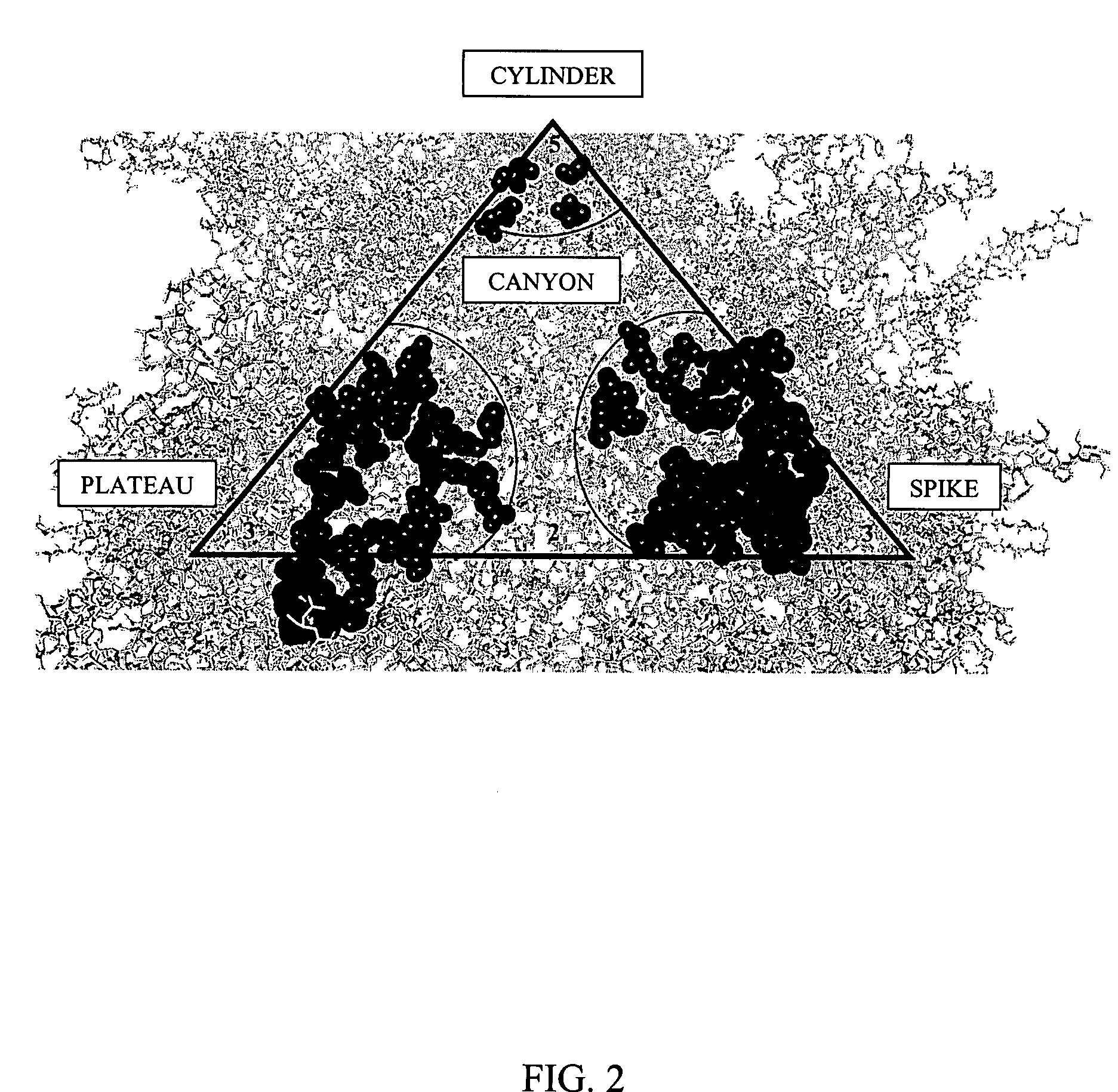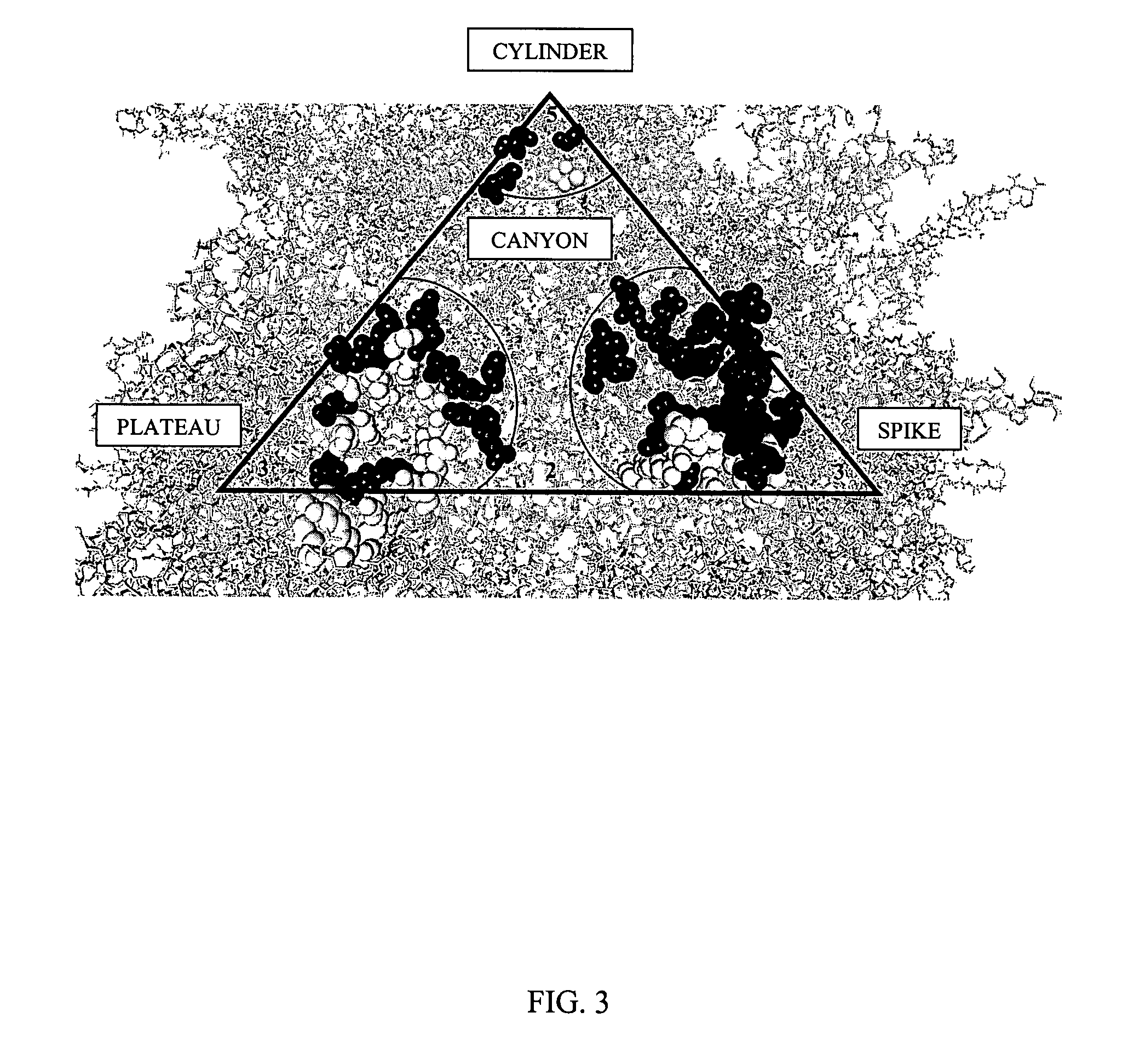AAV virions with decreased immunoreactivity and uses therefor
a technology of immunoreactivity and virions, which is applied in the direction of viruses, vectors, peptide/protein ingredients, etc., can solve the problems of insufficient protein concentration at physiological levels, abnormal protein level, and obstacles in the biopharmaceutical industry, so as to reduce immunoreactivity, reduce immunoreactivity, and efficiently transduce cells and tissues
- Summary
- Abstract
- Description
- Claims
- Application Information
AI Technical Summary
Benefits of technology
Problems solved by technology
Method used
Image
Examples
example 1
Recombinant AAV-LACZ Mutant Virion Preparation and Properties Thereof
[0141] Recombinant AAV-2 virions containing the β-galactosidase gene (rAAV-2 lacZ) were prepared using a triple-transfection procedure described in U.S. Pat. No. 6,001,650, incorporated herein by reference in its entirety. The complete cDNA sequence for β-gal is available under GenBank Accession No. NC 000913 REGION: complement (362455 . . . 365529).
I. Vector Construction
A. Mutant AAV Helper Function Vector
[0142] Based on the structure of AAV-2 (see, Xie et al. Proc. Natl. Acad. Sci. USA (2002) 99:10405-10410), 61 mutants were constructed by oligonuecleotide-directed, site-specific mutagenesis. The entire surface of AAV is composed of 60 identical asymmetrical structural units arranged in an icosahedral shape. This has two important implications. First, any single amino acid mutation that is made will be found at 60 places on the virus all at the same position relative to other amino acids within the asymmetr...
example 2
Factor IX Expression in Mice Using Mutant AAV-hF.IX
[0210] rAAV-F.IX is prepared using the rAAV-2 hF.IX vector and the methods described above. Freeze-thaw lysates of the transfected cells are precipitated, rAAV virions are purified by two cycles of isopycnic centrifugation; and fractions containing rAAV virions are pooled, dialysed, and concentrated. The concentrated virions are formulated, sterile filtered (0.22 μM) and aseptically filled into glass vials. Vector genomes are quantified by the “Real Time Quantitative Polymerase Chain Reaction” method (Real Time Quantitative PCR. Heid C. A., Stevens J., Livak K. J., and Williams P. M. 1996. Genome Research 6:986-994. Cold Spring Harbor Laboratory Press).
[0211] Female mice 4-6 weeks old are injected with mutant rAAV-hF.IX virions. Mice are anesthetized with an intraperitoneal injection of ketamine (70 mg / kg) and xylazine (10 mg / kg), and a 1 cm longitudinal incision is made in the lower extremity. Mutant recombinant AAV-hF.IX (2×1011...
example 3
Hemophilia B Treatment in Dogs with Mutant AAV-cF.IX
[0212] A colony of dogs having severe hemophilia B comprising males that are hemizygous and females that are homozygous for a point mutation in the catalytic domain of the canine factor IX (cF.IX) gene, is used to test the efficacy of cF.IX delivered by mutant rAAV virions (rAAV-cF.IX). The severe hemophilic dogs lack plasma cF.IX, which results in an increase in whole blood clotting time (WBCT) to >60 minutes (normal dogs have a WBCT between 6-8 minutes), and an increase in activated partial thromboplastin time (aPTT) to 50-80 seconds (normal dogs have an aPTT between 13-18 seconds). These dogs experience recurrent spontaneous hemorrhages. Typically, significant bleeding episodes are successfully managed by the single intravenous infusion of 10 mL / kg of normal canine plasma; occasionally, repeat infusions are required to control bleeding.
[0213] Under general anesthesia, hemophilia B dogs are injected intramuscularly with rAAV1-c...
PUM
 Login to View More
Login to View More Abstract
Description
Claims
Application Information
 Login to View More
Login to View More - R&D
- Intellectual Property
- Life Sciences
- Materials
- Tech Scout
- Unparalleled Data Quality
- Higher Quality Content
- 60% Fewer Hallucinations
Browse by: Latest US Patents, China's latest patents, Technical Efficacy Thesaurus, Application Domain, Technology Topic, Popular Technical Reports.
© 2025 PatSnap. All rights reserved.Legal|Privacy policy|Modern Slavery Act Transparency Statement|Sitemap|About US| Contact US: help@patsnap.com



